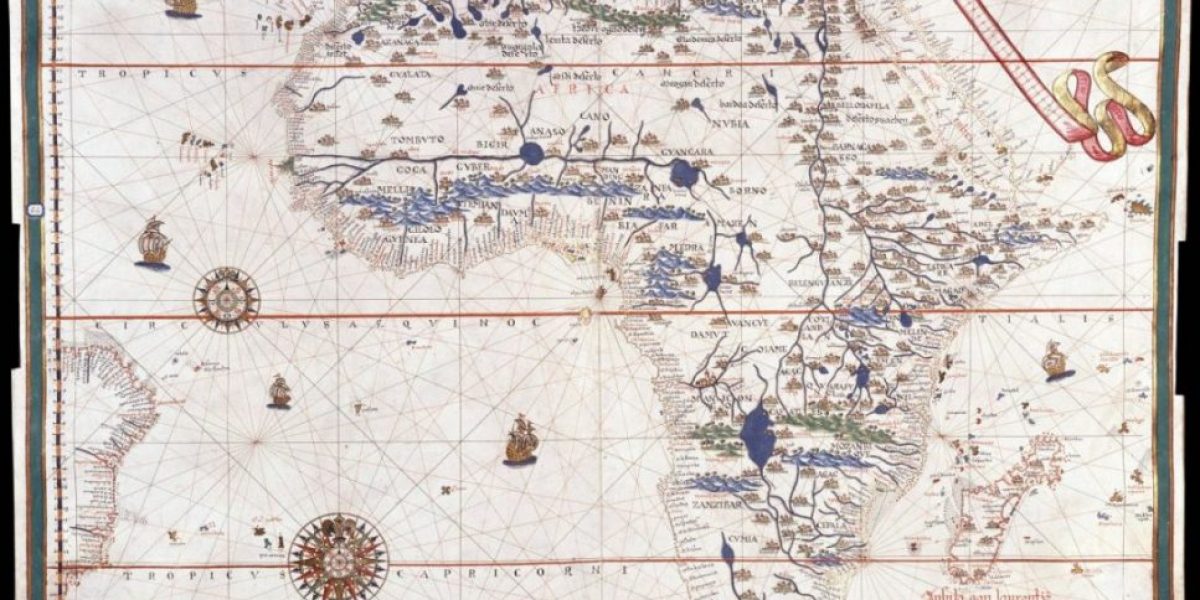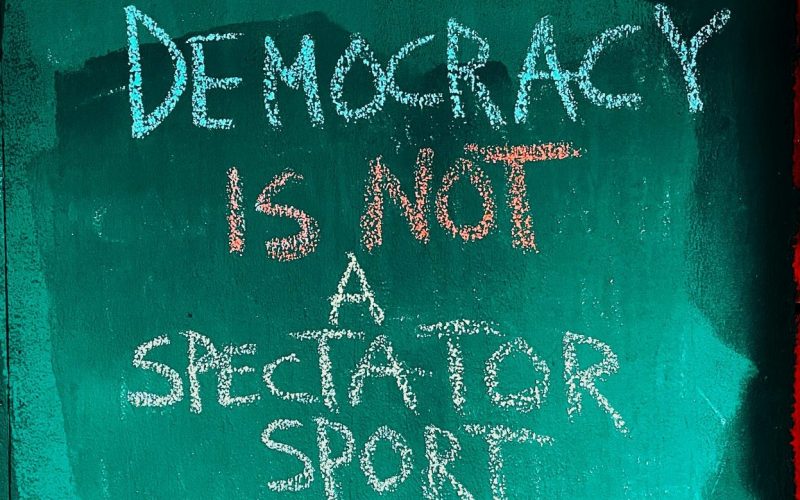IN 1963, in the same year that Kenya gained its independence from Britain, the newly emerging states of Africa formed the Organisation of African Unity. Although the body’s purpose was to help liberate those countries that remained under colonial or apartheid rule, there were those who hoped the OAU would pursue a more ambitious goal of creating a United States of Africa.
Three years ago, with the continent fully self-governed, the OAU was transformed into the African Union, and the model for regional integration has shifted from the United States to the European Union. This is telling: It suggests that regional integration in Africa is not a home-grown product, but an import of efforts by other peoples operating in very different political and economic circumstances. As with all imitations, regional integration in Africa is, consequently, a superficial movement that is unlikely to achieve many of its architects’ stated objectives.
Unity and security in Europe
The experience of Europe and East Asia show that while regionalisation provides a framework for peace and security among neighbouring states, development hinges on healthy national economies.
European integration, a process that is far from complete, was a result of the recognition by Europe’s leaders that if their countries did not do something to modify the founding principles of sovereign rights of states, Europe, sooner or later, would tear itself apart. In less than three generations between 1870 and 1945, two of Europe’s most powerful states, France and Germany, had fought three wars, each more devastating than the one it followed. The advent of nuclear weapons brought the message home to Europeans that urgent steps needed to be taken to prevent another war among European powers. Regional integration was seen as an inevitable road.
Western Europe, especially after World War II, was faced with another threat – that of being engulfed by Soviet as well as home-grown communist movements. Emerging from the war, Europe did not have the power to defend itself, so it turned to the US both for military protection and assistance to regenerate its shattered economy.
The Americans were glad to help, as they felt that Soviet expansionism – especially into the industrial heartlands of Europe – threatened their interests as well. To the Americans the many countries of Europe that were forever at one another’s throats could not in themselves be strong partners in containing the Soviet Union. Washington therefore demanded that Europe pursue regional integration as a condition for providing it with the nuclear umbrella.
But even before regional integration initiatives got under way, Europe had developed many entrenched states that had been in existence for a number of centuries. These states enjoyed political, social, and economic control throughout their entire territories. Also, by the mid-20th century, European societies had achieved similar levels of economic development and their populations enjoyed similar standards of living. There were exceptions, of course, such as the Iberian Peninsula and parts of southern Europe, which lagged behind, but these could be pulled up by the rest of Europe at a minimum cost through all sorts of targeted subsidies.
This industrial uniformity made it possible for Europe to implement trade liberalisation measures – the cornerstone of regional integration – with relatively little fear or likelihood that some countries’ economies and industries would be swamped by those of their more developed partners.
African conditions
As Africa aspires toward greater regional and continental integration, such conditions, by and large, do not exist. African states as we know them today were not created by Africans. With a few exceptions, such as Egypt, Ethiopia, Liberia and South Africa, African states were created by European imperial powers at the Berlin Conference of 1884-85. Nor did Africans gain control of these foreign-created states until recently.
African states therefore face a number of important obstacles to integration. They suffer from weak allegiance by their citizens; this explains why African countries during the past 30 years have been centres of many conflicts – civil wars, inter-tribal wars, violent communal conflicts and pogroms, wars of secession, and more recently in the Great Lakes region, attempts at genocide. These great conflicts have been accompanied by vast population movements in and out of different national boundaries. Africa, not surprisingly, is host to the largest number of refugees and internally displaced persons in the world.
In addition, because these states have only recently been self-governed, African elites perceive sovereignty as a valuable economic asset that enables them to enrich themselves. This exacerbates the weak allegiance of the populace towards these states as the process of elite self-enrichment undermines the ability of these states to deliver services to the general population.
Trade: A faltering engine
An important aspect of conflicts in Africa, unlike conflicts of the past in Europe, has been the almost complete absence of interstate wars. As we saw in the case of Europe, fear of devastating interstate wars was one of the driving forces behind European regional integration. This is not the case in Africa. During the past 50 years there have been only three interstate wars among African countries: between Tanzania and Uganda in the 1970s; between Ethiopia and Eritrea in the 1990s; and among several states and non-state belligerents in the Democratic Republic of Congo.
Given these fundamental differences in the experiences of Europe and Africa with state formation and development, it can be argued that regional trade integration cannot, at this stage in Africa’s history, be a major driving force behind Africa’s corporate co-operation any more than regional trade integration was a driving force behind corporate co-operation either in Asia or Latin America. One of the oldest regional organisations in Asia – the Association of South East Asian Nations – was inspired more by the common fear of communism than by shared development objectives.
European countries, big and small, achieved a high level of industrialisation and economic development long before regional trade integration was high on their agenda. It was political and security issues, rather than economic development issues, that drove European integration.
In contrast, there are no political or security issues behind African regional integration. Attempts to introduce these issues into the continent’s various regional economic communities – as happened with the Southern African Development Community following the military invasion of the DRC by Rwanda and Uganda – have been destabilising: SADC nearly collapsed as a result.
Instead, African countries have engaged in attempts at regional integration for economic reasons. The rationale is simple enough. Most African countries are small, poor, and under-developed, and therefore lack domestic markets. To compensate for these shortcomings, the argument goes, it is necessary that African countries to eliminate barriers to trade among themselves. In doing so, they will be able to develop enterprises with the requisite economies of scale to be competitive in the world markets.
But the experience of Europe shows that Africa’s approach is flawed. Small European countries – Sweden, Switzerland, the Netherlands, Denmark, and Belgium – developed world-class companies long before European integration became reality. Consider a few examples: Electrolux, Volvo, Saab, Nestle, Philips, Unilever, Royal Dutch/Shell, Carling, Interbrew, Heineken, Ericsson, Nokia, and Norsk Hydro.
The importance of policy
The success of such companies demonstrates that it is not the size of a country’s population that determines whether a country industrializes or not. It is, rather, a country’s skills pool and its control over its economic and social policies that determines whether a country industrializes. This is the critical factor in determining whether a country can develop successfully, and it is seldom the case that African countries possess such control. In most instances, political, social and economic policies in Africa are highly influenced or directly controlled by foreign actors pursuing their own interests on the continent. The following are amongst the most important non-African actors that determine African policies.
Foreign multinational corporations. The most striking examples today are the oil companies that run massive extractive industries in Africa and have almost no linkages to the local economies wherein they operate other than a trickle of royalties that pays for imports to finance elite consumption and fuels corruption and repression.
Multilateral financial institutions. Through various forms of conditionality these organisations, like the World Bank and the International Monetary Fund, dictate the economic and social policies of African states.
Foreign state and non-state actors. Because of their role as donors and/or creditors these have extensive leverage over the social and economic policies of African states.
Another important factor that determines whether a country develops or not is its ability to generate a meaningful economic surplus and its ability to direct a large part of that surplus to productive investment rather than merely to private consumption. The lion’s share of sub-Saharan Africa’s surplus leaves the continent as debt repayment, expatriation of profit, capital flight, etc. One of the most disgraceful but underreported scandals in Africa is the extent to which African elites export capital from the continent. According to the UN, nearly 40% of Africa’s private wealth is kept outside Africa compared with only 3% of South Asia’s private wealth and 6% of East Asia’s. The small economic surplus that remains, as we have seen, goes to finance elite consumption and to pay for the running of the largely unaccountable state.
These are some of the factors that explain the inability of sub-Saharan African states to train and retain the skilled people they need in order to embark on a sustainable industrialization drive comparable to that of, for example, South and East Asia.
Aid hasn’t worked
During the last 40 years or so, vast amounts of time and money have been expended on promoting regional integration in Africa, largely to no avail. The pathetically low trade flows among African countries – excluding South Africa – have largely remained unchanged from what they were a generation ago, despite all the energy that has been devoted to regional cooperation and integration over the years.
Drawing from the experience of Western Europe in the past, and what is happening in Asia now, it would appear that two engines drive development and industrialization: one, policies that promote capital accumulation and investment in social capital – healthcare, education, public housing and social peace; and two, competitiveness in world markets.
These are the factors that explain why small countries in Europe were able to achieve the same level of development as big countries long before European integration appeared on the horizon after World War II.
A similar message applies to Africa. It is the developmental domestic policies and practices of individual countries that will drive Africa’s development in the first instance, not how neighbours cooperate. What happens between neighbours is important mainly for reasons of political stability, but what will drive African economic development is the quality of relations between individual African countries and the world market. (African markets are of course subsumed in world markets.) Similarly, it was the ability of small countries in Europe to compete in world markets that made it possible for them to achieve the same levels of development as those of large countries which had the advantage of bigger domestic markets.
Two that work
There are, of course, some exceptions in Africa to these general observations. These are most prominently South Africa and Mauritius. These two countries are developing industrial economies that if sustained over a significant period could become important drivers for African development not because of regional integration but because of their emerging role as foreign investors in the rest of Africa.
Mauritius, in fact, illustrates the relative insignificance of regional integration in the development process. At independence in the 1960s, Mauritius was a typical African country – small land mass, small population, single-crop economy (sugar) accounting for most of export earnings and formal employment, multiethnic society, and low per capita income. Today Mauritius is, next to South Africa, the richest non-oil producing country in Africa. It boasts an economy that is almost as diversified as that of South Africa and per capita income that now surpasses South Africa’s.
This phenomenal achievement was not driven by regional integration, but by competitively priced, high-quality clothing and textile exports to world markets. Mauritius, like South Africa, has emerged as an important foreign investor in other African countries.
As these two countries show, the emphasis in Africa should be placed on strengthening national economies and democratic practice first. Only then will successful regionalisation follow.








